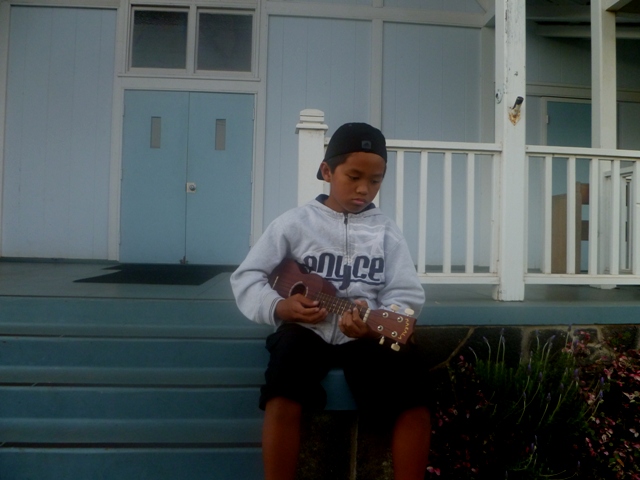The Cacao Farm and Waimea

When I travel, I use my expeditions to learn what is happening with tropical fruits all over the world. Cacao has long been an interest to me. Fairchild’s International Chocolate Festival is gaining more popularity each year, and the Fruit Program is becoming more involved in this event. We visited The Hawaiian Chocolate Company in Kalilua-Kona to learn more about cacao. They offer tours every day and they are part of the program for cruise ships when they make port in the island.
Cacao, which is native to South America, was first planted in Hawaii by German physician William Hillebrand in 1850, according to state records. Though long studied as a plantation crop, the big challenge has been making money from the plant, which is well suited to Hawaii’s climate but can be tricky to grow and requires expertise in processing into chocolate.

The Hawaiian Chocolate Company tour started with a chocolate tasting and a visit to their small planting. Farms in Hawaii are no more than 15 acres. They have 350 trees that are approximately 6 years old. They are ‘Criollo’ types from seed. The owner explained that they are an old fashion factory and probably the smallest in the world. They produce the chocolate from the tree straight to the store. There are just 5 people running the company.
The cacao pods are harvested and placed in wood boxes, then the seeds are removed to begin the fermentation process. They don’t have enough trees to supply their factory, so they have 13 more growers in the island that supply them beans.

The factory is small and the entire process takes just one month. They were quick to point out that they are having fun and enjoy their work. Despite Hawaii being the only place in the United States with commercial cacao production, there are only a handful of cacao farmers with a combined 50 acres of trees. The largest grower, Dole Food Co., has about 13,000 trees on 20 acres in Waialua on O’ahu’s North Shore. There are fewer than 30 farmers growing cacao in the state of Hawaii, and perhaps there is closer to 100 acres of cacao planted.
Hawaii is far from attaining prominence as an origin of specialty chocolate the way Napa Valley is known for wine, but agriculture researchers are trying to give the fledgling local cacao industry a boost toward that lofty goal.
There have been a couple of attempts to establish big cacao farms with their own factories over the last couple of decades, but they have failed. The price of land is still too high to make it a profitable business.
After visiting the cacao farm we drove north to Waimea so I could give a presentation for growers in this part of the Island. Vicky Dunaway is organizing a chapter for the Hawaiian Tropical Fruit Growers. This part of the island shows its age as lava rock covers the landscape with almost no topsoil. It is dry and looks like the surface of the moon. We passed by the Parker cattle range, one of the biggest in the United States. This is also the site of an observatory where many countries have telescopes pointed to the stars. I would love to see this, but alas it is not open to the public and access requires a better car!

The temperature and humidity change as we arrive into Waimea. The music is different too–there was a kid playing his ukulele on his porch. As I surveyed the areas, I saw some avocados and bread fruit trees. The microclimate changed once again from the other side of the city. When we got to the talk, they had posters and fruit for the new members of the chapter. Vicky introduced me to the group and presented me with a lei as a sign of welcome. This is a tradition in the state, which made me feel really good. I presented to the growers some options to grow in the area based on our experience at Fairchild. The group was small but interesting. There were some growers, but also hobbyists and a few horticulturists in the group. After the meeting, we had to go back to Kona to prepare our early morning trip to Kaua’i.
